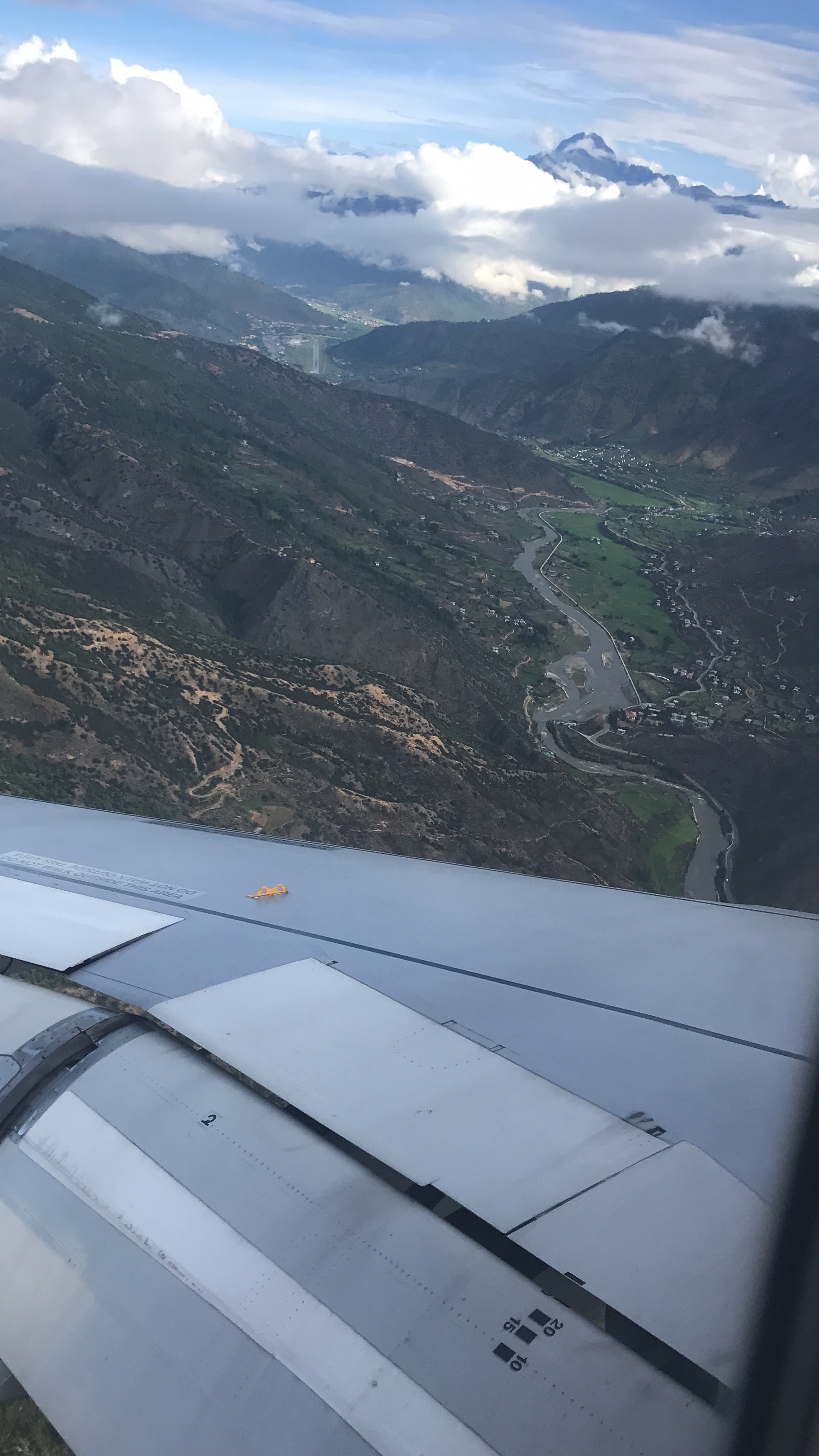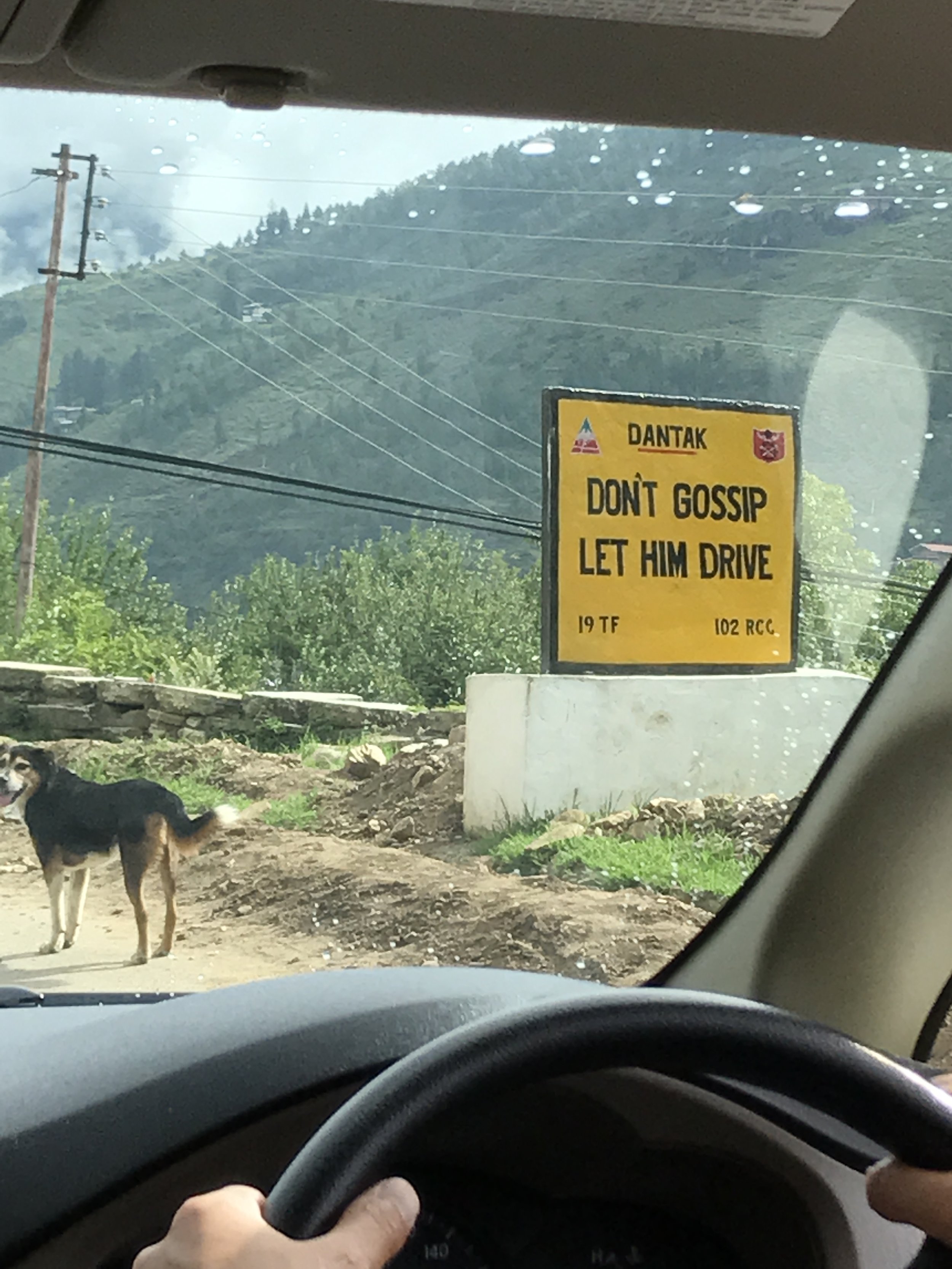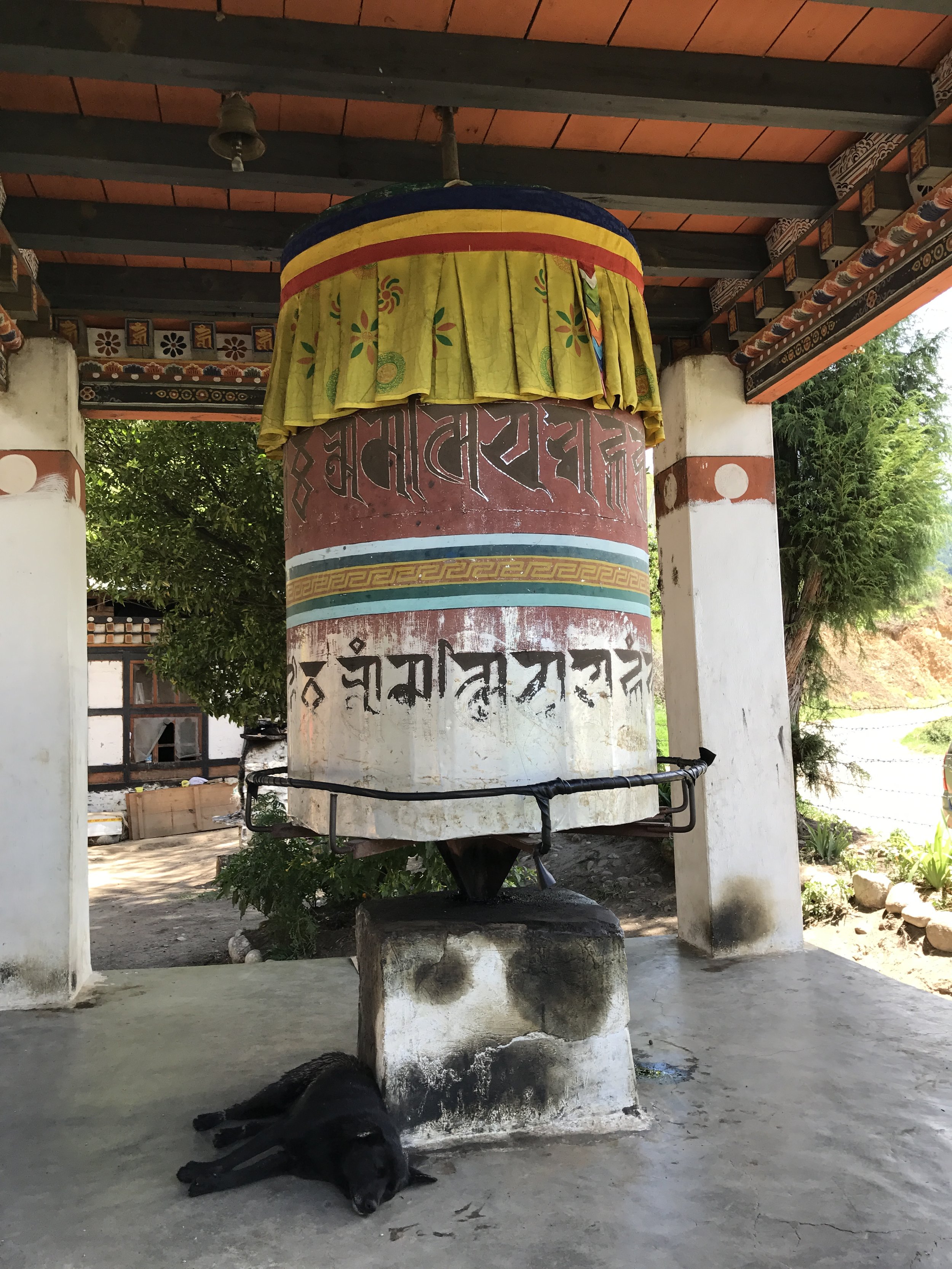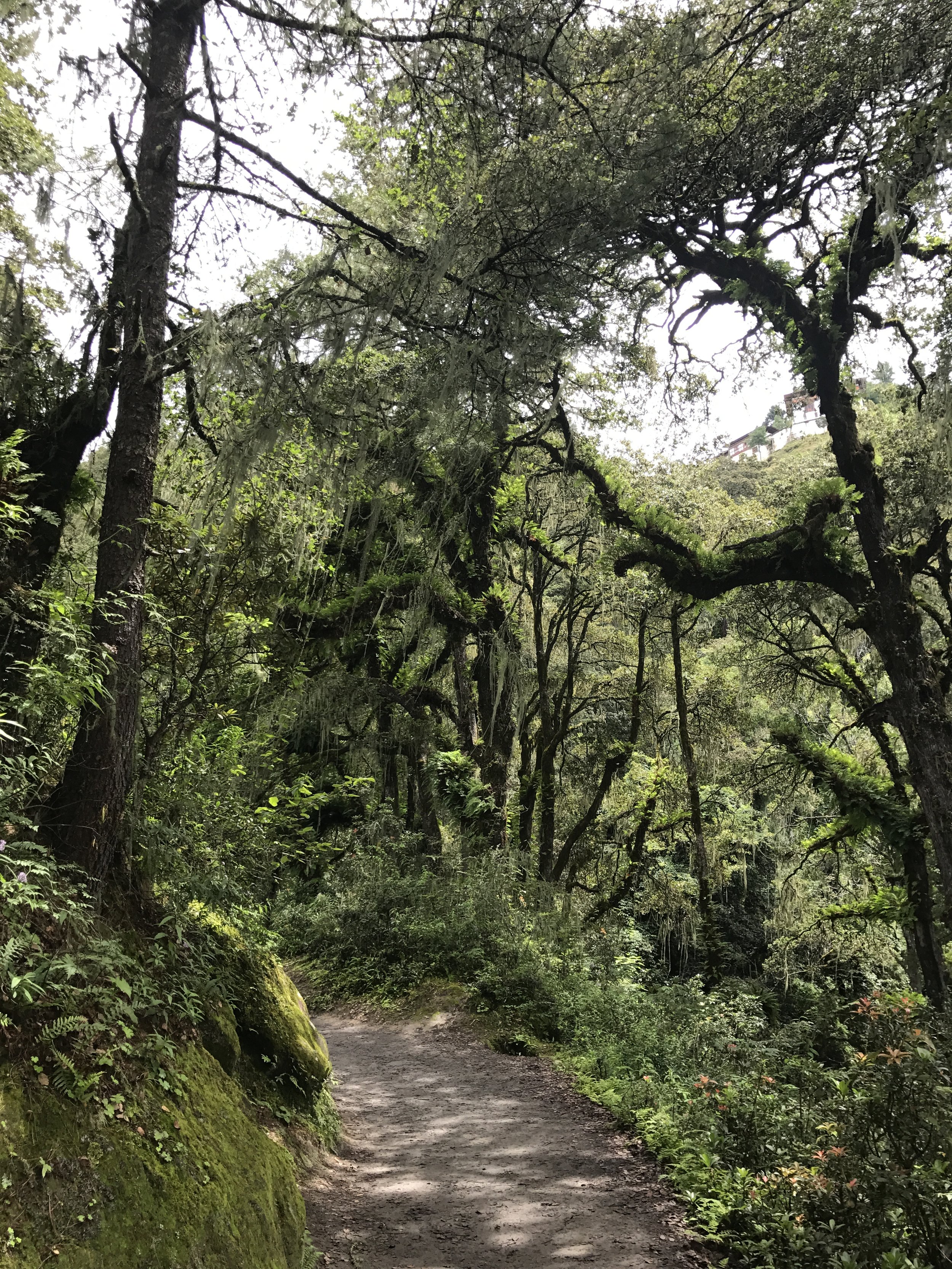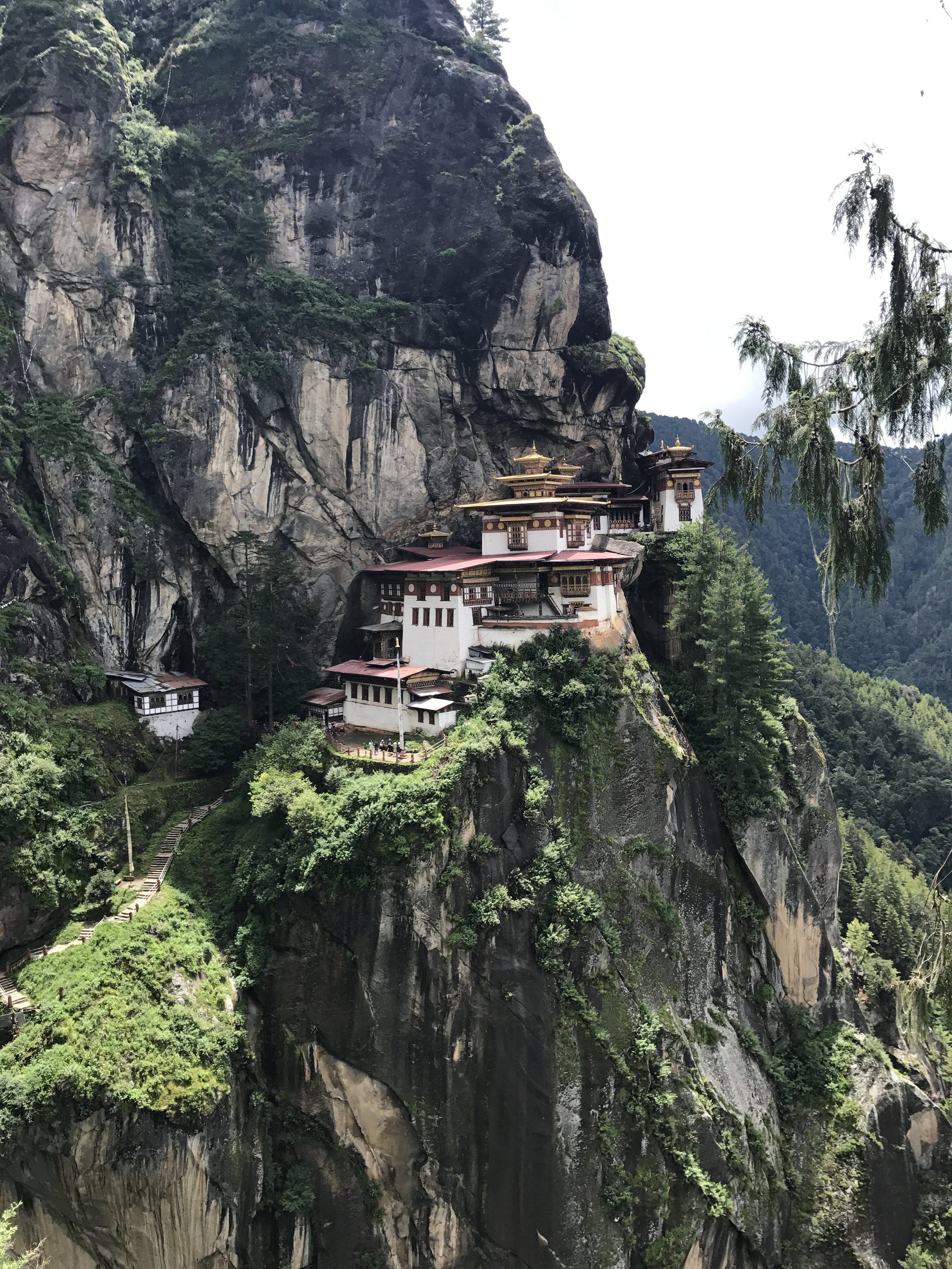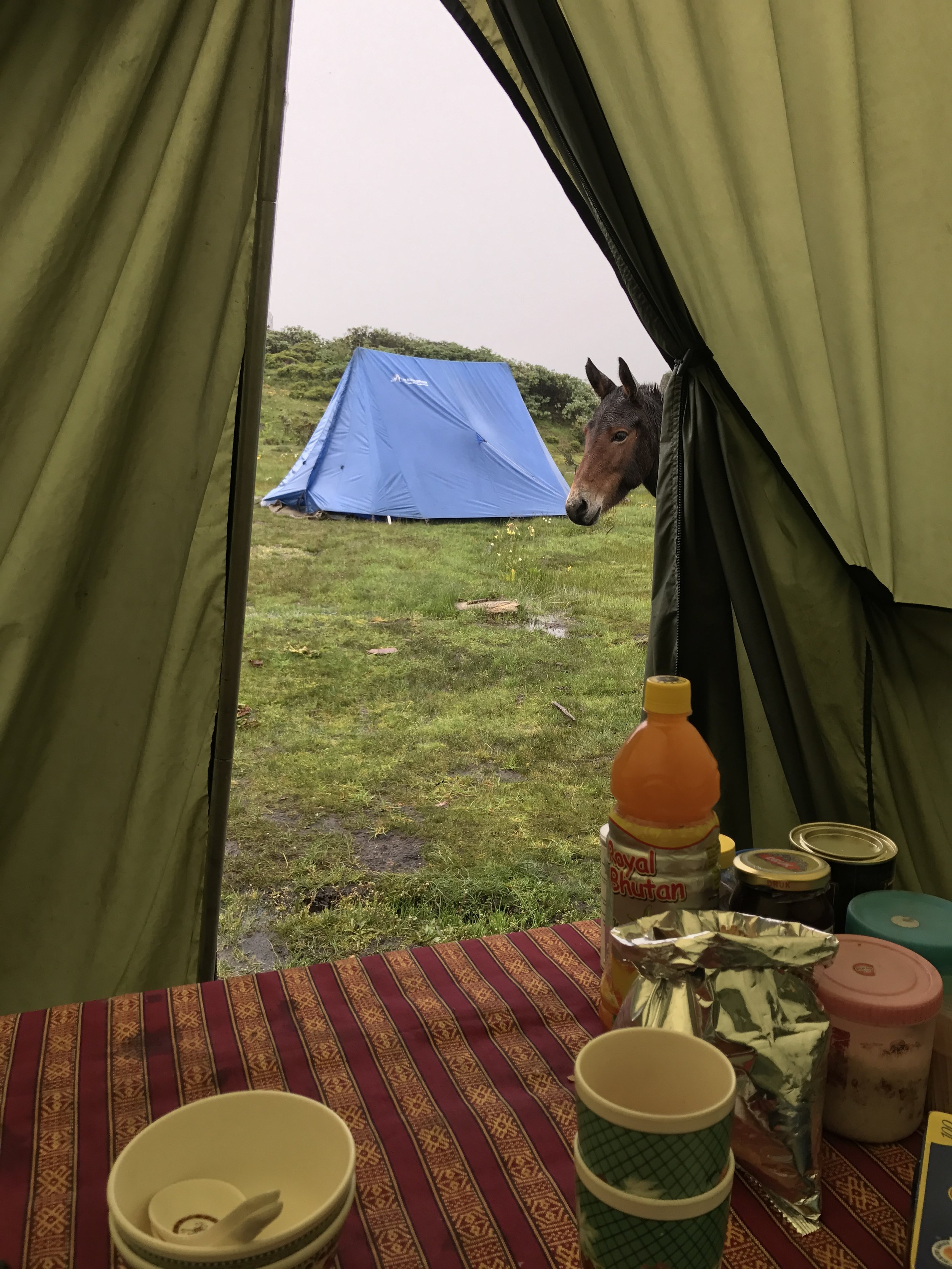Soul-Searching Above Rainy Clouds – A Journey to Bhutan: Part I
Soul-Searching Above Rainy Clouds – A Journey to Bhutan
Travelling always played a special role in my life. I pretty much got “wanderlust” fed with the breast milk. When I grew up, we traveled a lot as a family, as many Germans do. The holidays were always an adventure to look forward to.
Many years later, the Hong Kong interpretation of work-life balance makes long trips difficult to pull off. On top, it is not always easy to synchronize annual leaves between my wife and me. So sadly, we just manage one bigger adventure trip of one to two weeks every other year. In between, we make a bunch of shorter getaway trips.
After last year’s annual leave was consumed by the preparation of our wedding, we decided that this year a larger expedition would be in order.
Already vacation deprived, a particularly stressful summer at work added to my “itchy feet”. It is fair to say, that I barely ever felt so in need of a vacation.
Active Holidays - the Ultimate Path to Relaxation
I wrote a two-part “Ode to Active Holidays” in an earlier Life-Sparring round last year, so I do not want to repeat myself too much. Essentially, I believe that for me adventurous holidays, preferably trekking trips, are the best way to spend a vacation. While luxurious beach holidays look awesome in the catalog, they provide far less unique experiences and are less memorable. Also, luxury beach vacations with decent Wi-Fi coverage bear the danger that I spend large parts of my holiday answering work-related emails. And even if I resist the call of work, being entirely relaxed is not without danger. I experienced holidays in the past, where the sudden change of pace of life made me prone to sickness.
A challenging trekking holiday, on the other side, mixes excitement with a good dose of discomfort and prevents all the potential pitfalls described above. Challenging myself physically and overloading my mind with fresh impressions in a natural environment, helps me to decompress and refresh mentally.
In this spirit, I did my research and narrowed it down to three attractive options: hiking from lake to lake along the brand new BergeSeen Trail in Austria’s Salzkammergut, joining a guided group trek through Iceland’s Laugavegurinn and traveling to the mystic Himalayan Kingdom Bhutan.
Destination: Land of the Thunder Dragon and Leeches
Despite having some reservations, we decided for Bhutan. Bhutan is one of those few places with an almost magical allure. Especially since I started mindfulness meditation, I wanted to visit this secluded Kingdom in the Himalaya’s. However, with our annual leave falling into the first half of August, we would visit Bhutan right in the middle of the Monsoon, the annual rainy season.
The Lonely Planet suggests avoiding trekking in Bhutan between July and late September due to muddy trails and “legions of blood-thirsty leeches”, not exactly the right message to reassure my wife. There is possibly only one thing, that my better half fears more than the lack of clean sanitation: leeches. Compared to this blood sucking threat, the physical challenge of hiking in elevation of 2,200 meters up to 4,200 meters lost a bit of its scariness.
After some internet research on Monsoon conditions and friendly recommendations to fend off squirmy bloodsuckers (Bushman Ultra Repellent, available as water resistant crème with 80% DEET, no affiliation), we decided not to let a few clouds get into our way to the self-proclaimed happiest place on earth.
Bhutan – an Exclusive Tourist Destination
Part of Bhutan’s legendary reputation is created by the restrictive access to the country. Tourists (except for citizens of India, Bangladesh, and the Maldives) need to book a minimum tourist package of US$ 250 (US$ 200 in the off-season) per day and person through a registered travel agency. For single travelers or couples, there is an additional surcharge of US$ 40 respectively US$ 30 per day.
This policy makes Bhutan one of the most expensive travel locations in the world, only topped by mountain climbing expeditions, trips to Antarctica, space flights or stays in obscene luxury hotels.
At the same time, this focus on high-quality visits over mass tourism helps to limit the impact of tourism on culture, heritage, and nature. US$ 65 per day and person go as so-called “sustainable development fee” into healthcare, free education, social work, and infrastructure projects. Essentially every visitor contributes directly to financing the future of Bhutan.
As there is no way around the minimum package, the first step towards traveling to Bhutan is finding a tour operator of your trust. The Tourism Council of Bhutan has a directory with several hundred tour operators listed, but the list is not exactly helpful to make a choice. I did some Google research and settled for an agency called Druk Asia (again, no affiliation), which stood out with an informative website and an office in Singapore. Different from many other operators Druk Asia does not rely on a foreign-owned overseas partner to channel tourists their way but instead markets their tour packages themselves among other means through Google Ads. That Druk Asia is the official sales agent in Singapore for the state-owned airline Druk Air also added legitimacy in my eyes.
I did not regret the choice as the customer service was very responsive without being pushy. All questions were answered promptly and whoever authored Druk Asia's email templates has a refreshing sense of humor. A visa confirmation letter that starts with “Kuzu Zangpola!
A masked dance is in order; your visa to the Kingdom of Bhutan has been approved!” really sets the mood for traveling.
Travelling on the Wings of the Dragon
We started our trip on August 2nd, flying from Hong Kong to Bangkok. After a couple of hours at the airport hotel at Bangkok’s Suvarnabhumi airport, which I spent frantically working and fixing the toilet, we checked in at 2:30 am for our 4:30 Druk Air flight to Paro via the Eastern Indian city of Guwahati.
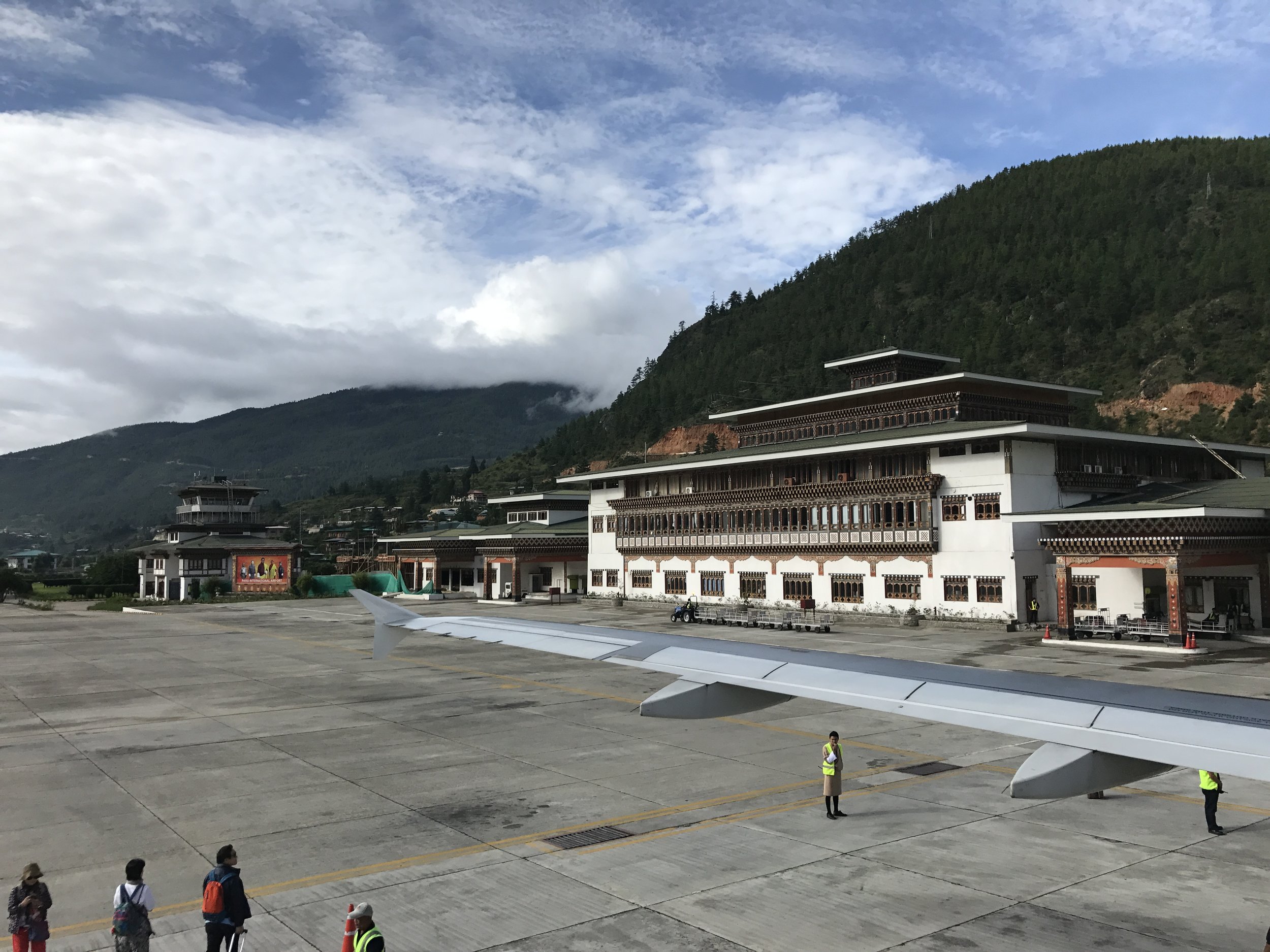
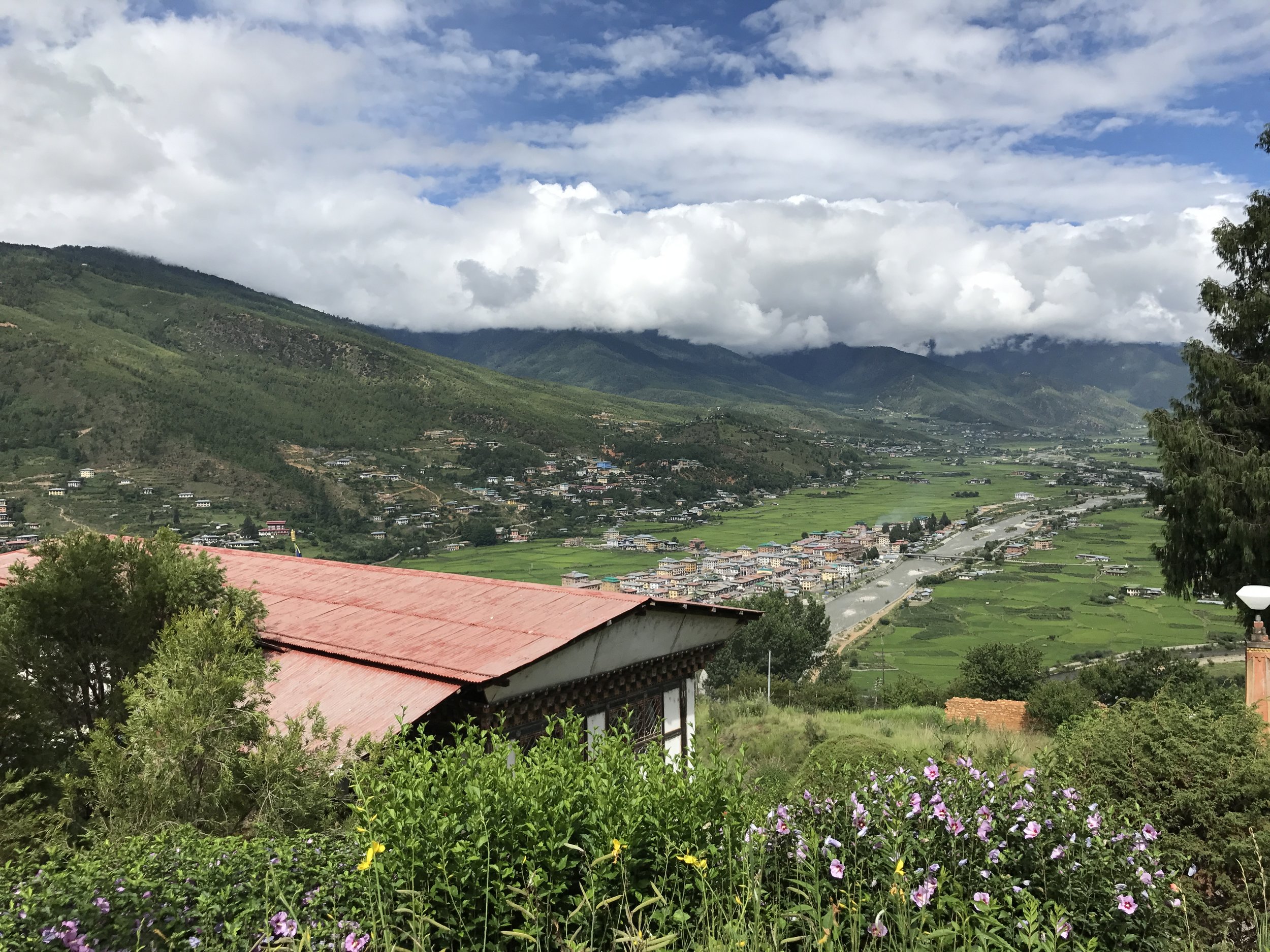
The mix of passengers was as expected: a few westerners in their fifties, a few Indian families, a few Bhutanese and a huge number of Korean's who benefited in 2017 from a promotional exception from the mandatory minimum tourist package and a 30% discount on the flight rate.
Till the stopover in India I tried to add a bit to the odd hour of sleep that I got in Bangkok. The 40 minutes of the last leg from Guwahati to Paro however, I then spend pressed to the window. The incredible mix of clouds and mountains and the breathtaking spiral approach to Paro International Airport were the best form of in-flight entertainment I ever enjoyed.
After a pick-up by our guide and our driver, both conveniently named Sonam, we drove to our hotel to drop the luggage. As the rooms were not yet ready, we headed off after a cup of tea for some sightseeing around Paro.
Paro Valley – The First Taste of Bhutan
In total opposite of our wild Monsoon nightmares, we were not greeted by heavy rain but by sunshine and 27 degrees Celsius. Driving into downtown Paro is an experience in itself. Lazy dogs are sleeping in the middle of the road, cows slowly trotting their ways and tiny cars (almost exclusively Suzuki and Hyundai) patiently navigating around the animals.
Another cultural specialty that caught my eyes within minutes after arriving was the bright yellow and partly hilariously texted traffic education boards that align the main road through the Paro valley. "Safety on the Road is safe tea at home" and the blatantly sexist "Stop gossiping, let him drive" were among my favorites. The main roads and its signs, by the way, are maintained by laborers from India, under the banner of Dantak, part of the Indian Army’s Corps of Engineering. The road workers with their lack of modern equipment and their children practically growing up on the construction side are, to say the least, an unaccustomed sight to the western eye.
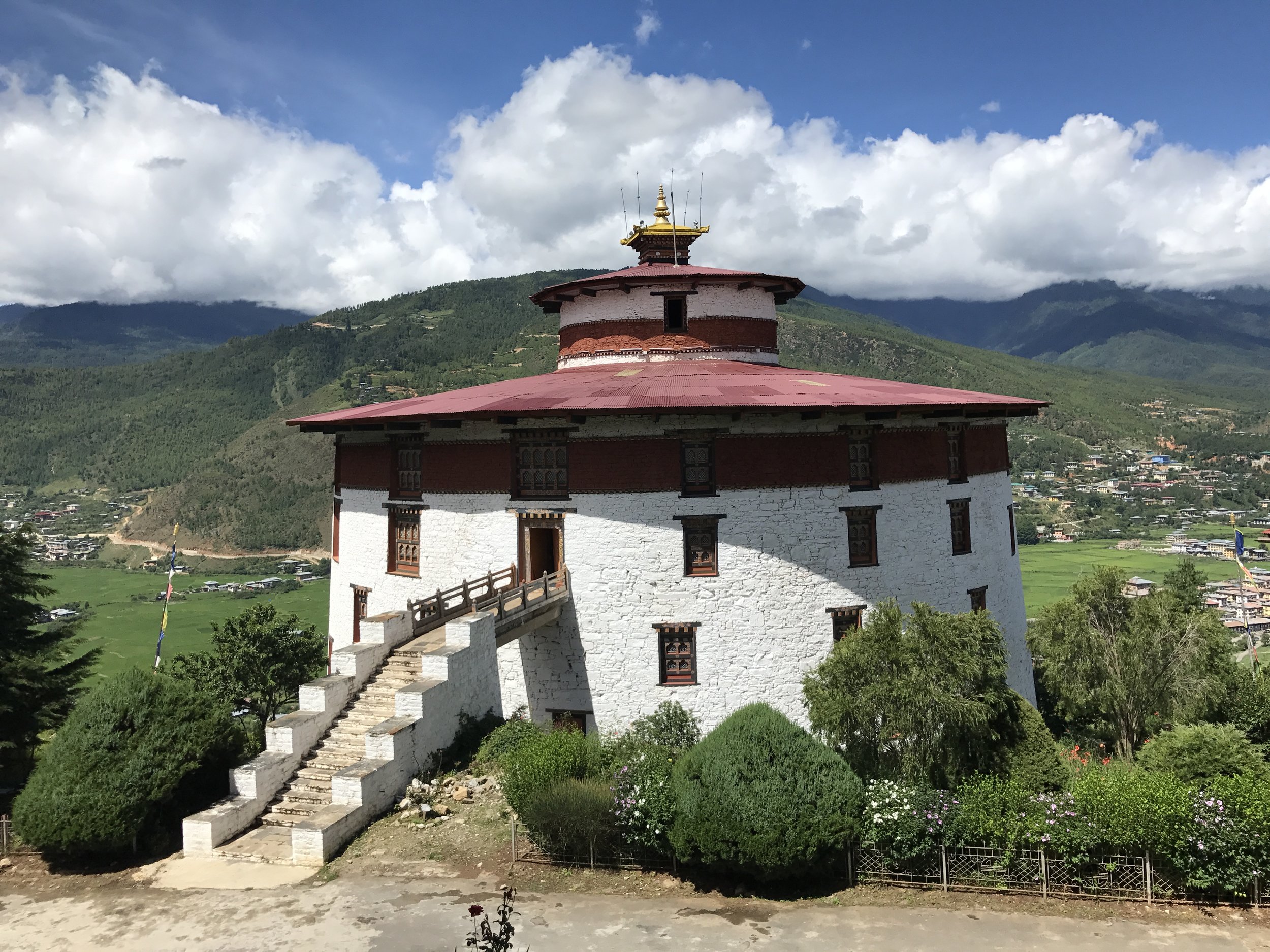
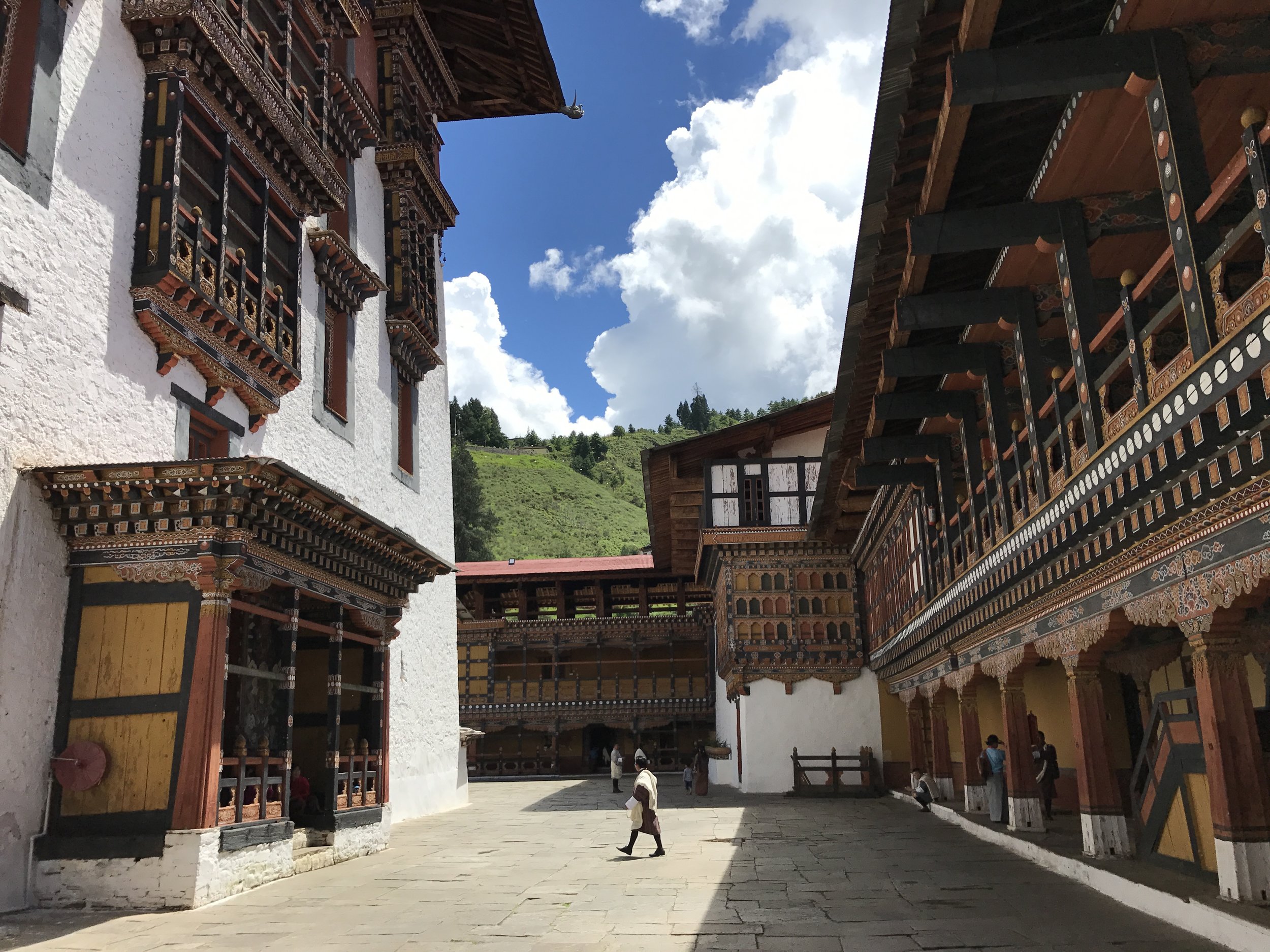
The city of Paro, home of Bhutan’s only “international airport”, is idyllically stretching along the Paro Valley, on both banks of the likewise named river. With around 15,000 inhabitants and surely a few thousand dogs, the city has a pretty village feel about it. We covered most of the historic sites of Paro on the first day, with the historical fortress, the Rinpung Dzong, being the most impressive.
In general Bhutan’s Dzongs, are unique architectural and conceptual feats. Different from fortresses in the medieval West, the Bhutanese Dzongs did not serve only military purposes, but were and are clerical and administrative centers at the same time. Even today the most significant Dzongs like Paro’s Rinpung Dzong and Thimphu’s Tashichho Dzong house monasteries, public offices and courts.
In Prince William’s Footsteps to The Tiger’s Nest
Our second day in Paro was dedicated to Bhutan’s best-known attraction, the iconic Tiger’s Nest Monastery also known as Taktsang Palphug Monastery. Since at least British heir apparent Prince William and his Kate hiked up to the photogenic Tiger’s Nest in 2016, the iconic monastery makes every “top ten places to visit” list, and rightfully so.
The hike itself and the visit to the monastery felt like a little pilgrimage. Starting in a forest, the trail takes a winding route not too step but steadily ascending, with the monastery high above visible on every clearing. While the legend of Guru Rinpoche flying on the back of a tigress to the spot where the monastery was built might be a little over the top, the temple site definitely has a mystic aura. It is hard to believe that mere humans carried the material to the mountaintop and constructed such a delicate building, back in 1692.

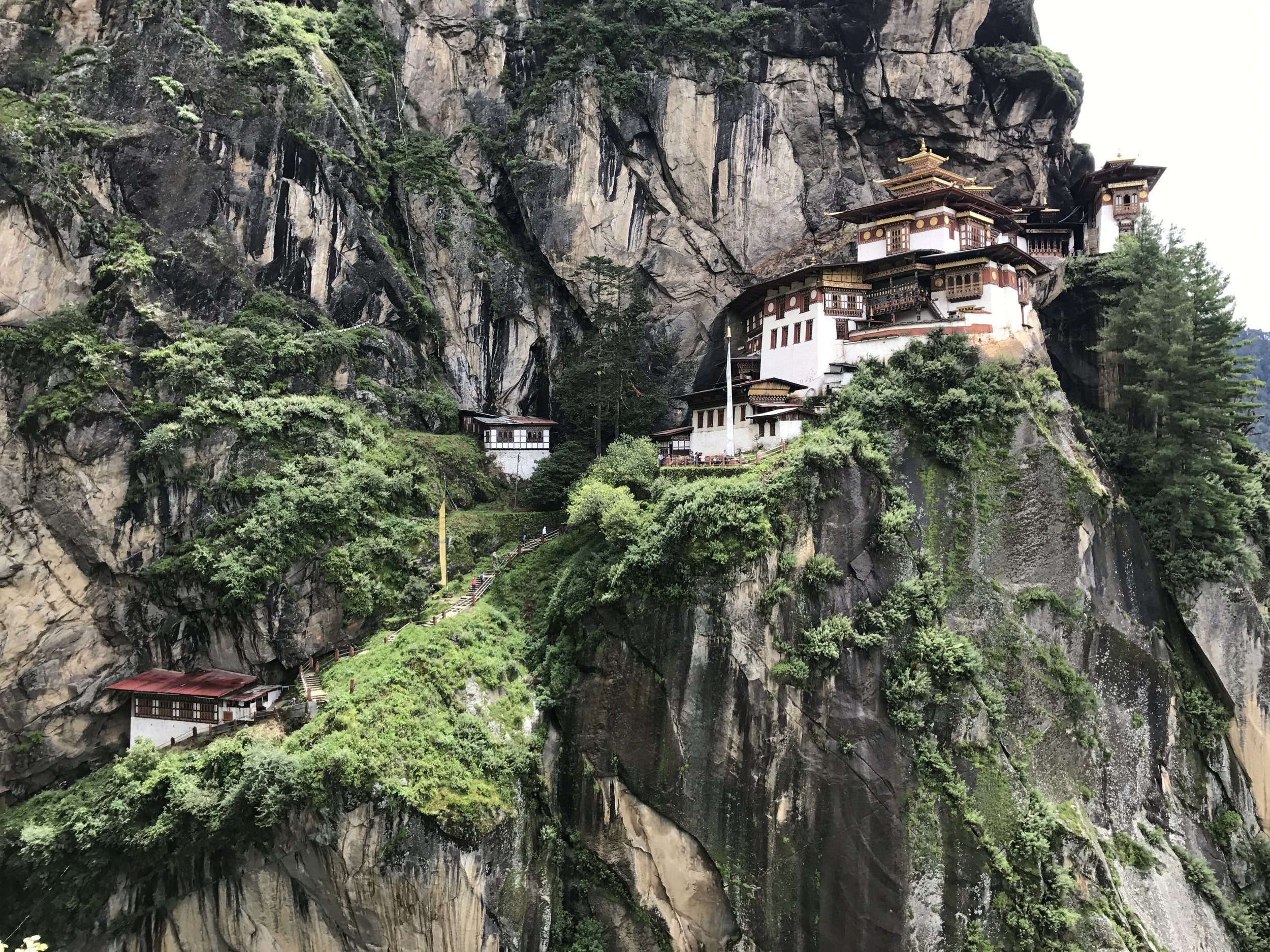
As the Tiger’s Nest visit is the ultimate must-have to-do in Bhutan, for tourists and locals alike, the monastery is an equalizer, bringing people from all walks of together. We, for example, ran into the current leader of the parliamentary opposition of Bhutan and exchanged a few pleasantries.
Unlike many other religious sites turned tourist attractions, the Tiger’s Nest has not lost any of its spirituality. Sitting on the floor in one of the praying rooms I wished I had more time for a longer meditation, but our guide concerned about potential rain and my wife not being the most patient didn’t grant me more than a few minutes.
We hiked the 10 km up and down to the monastery relaxed in slightly less than four hours, including countless photo breaks. We were extremely lucky with the weather too, it only started raining on the last kilometer.
The hike to the Taktsang Palphug Monastery was an absolute early highlight of the trip and a good warm-up for the 4-days Trek on the Druk Path, that was due to start the next morning.
Accompany us on the Druk Path Trek in Part II of this article.




